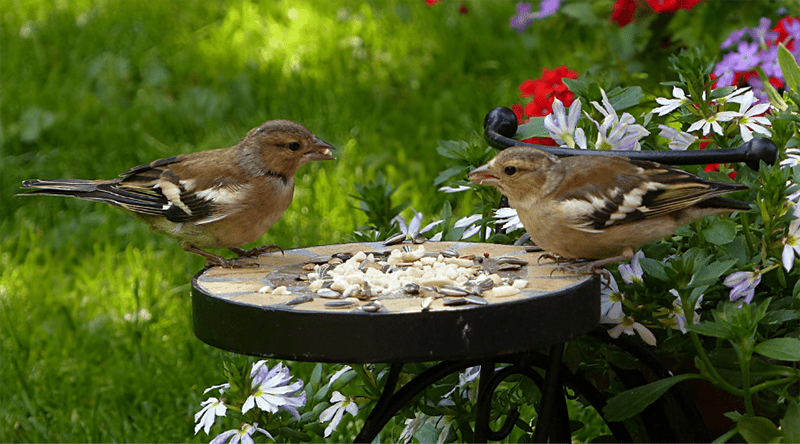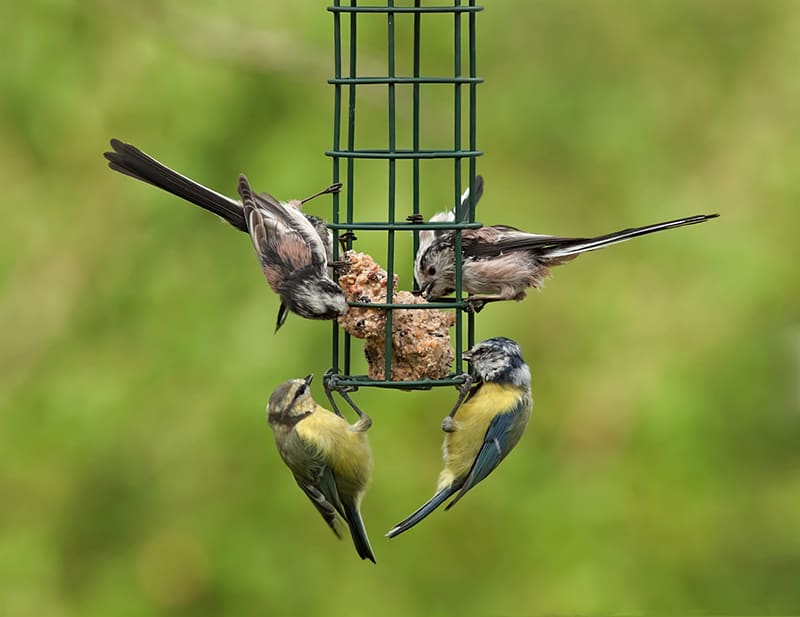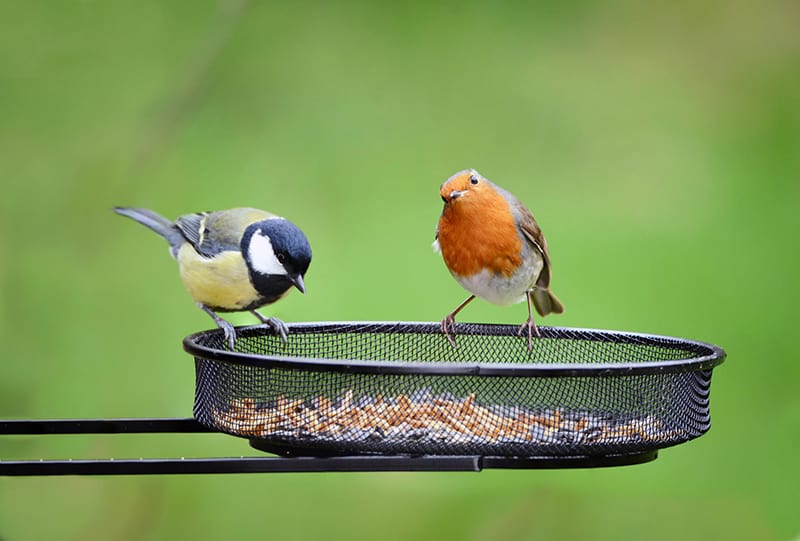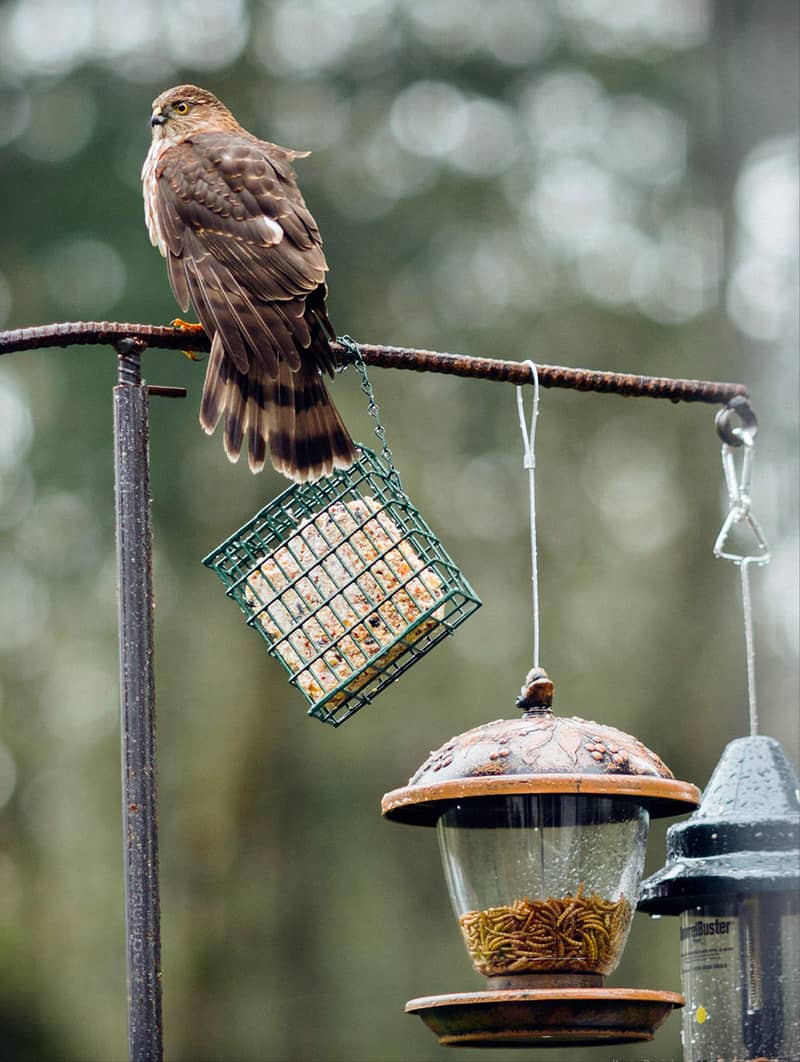Songbirds flying around, feeding on the vegetation, and nesting in the trees in your garden can enhance its beauty. Fortunately, you can attract songbirds to your backyard easily by providing them with what they need most throughout the year, such as nesting sites, water, shelter, and food. If you add new features to your garden to address these needs, you will find a wide range of bird species in it. The requirements that will significantly attract songbirds to your yard include:
Nesting Sites
Nesting sites can host the songbirds for generations to come into your garden. The sites provide a sufficient environment for mating and nesting habits.
An excellent example is a birdhouse. There are many birdhouses you can buy to host songbirds in the garden. If you live in an area where the weather is often rainy, it would be better to choose a wren house that can endure the harsh weather. The birdhouse can also add beauty in your garden and attract a wide range of songbird species. This unique birdhouse comes in different colors and is made of recycled plastics strong enough to host songbirds for an extended period.
However, birdhouses may be a dead investment if you position them in unsuitable places. If you place a birdhouse in areas where predators can access it or in positions that harsh weather can affect the songbirds, it may go unused for years. Place the birdhouse in areas where predators cannot access, and weather cannot affect its occupants.
Songbirds can flock your garden in significant numbers and overwhelm the birdhouses provided. It is, therefore, essential to provide nesting materials for them to construct their own nests in your backyard. Materials such as grass clippings and dead flowers are the preference of most songbird species. If they are not available, you can get balls of cotton fluff, pet fur, small sections of strings, and lint. You do not have to provide all the materials. A few materials are sufficient.

Ensure that the landscape is diverse
To attract songbirds to your garden, opt for a multilayer and solidly packed landscape with different plants to supply food and structure throughout the year. As you design and plant beds and borders, think vertically and horizontally and include multiple plants, including herbs, perennials, annuals, grasses, and vegetables. The seed heads of perennial plants and ornamental grasses attract fall ground-feeding songbirds and supply cover for the songbirds while they are foraging on the ground.
Food
Songbirds migrate from one place to another in search of food. Many homeowners have the misconception that they only need to provide them with food only when the weather is harsh, like winter. However, if you want to attract songbirds all year round, give them food from reliable sources. Place the food in easy to reach areas to attract a wide range of songbirds. The songbirds will always consider your garden as their favorite spot.
Some people only want to attract specific songbirds in their garden. To achieve that, learn the food that specific species are fed on and get it from a reliable source.
Some songbirds love sunflower seeds. The color attracts them from quite a long distance. However, grains like millet and safflower are alternatives for different species that do not feed on sunflower seeds. You can try new seeds to your existing feeds to spot the birds the show preference.
If you prefer insect-eating songbirds, then you should introduce mealworms and suet in your garden. With that, expect a significant number of woodpeckers and nuthatches. You can make your bird suet or buy different blends for different birds.
To attract songbirds, such as titmice, jays, and magpies, provide shelled nuts and whole nuts in your garden’s buffet. Instead of offering pure nuts, you can mix the nuts with suet and sunflower seeds or any other seeds.
If you love to watch nectar songbirds in your garden, put up a hummingbird feeder for nectar songbirds in your yard. Species like woodpeckers and orioles will enjoy the nectar feeders.

Water
About 90 percent of what songbirds feed on is dry food. So, the availability of water in your garden can also quench their thirst and ease their digestion. Songbirds also enjoy splashing in the water. Therefore, you can attract them by including a birdbath in your yard. You can install a 2.5 cm by 10 cm deep sloping bath that will accommodate various species. To add to the bird’s comfort, add two stones for the birds to walk in and out of the bath easily. Position the bird bath at an accessible place where you can easily clean and refill the water every few days. It is also essential to place it in an open location so the songbirds can monitor their surroundings and watch out for potential predators.
Depending on the size of your garden, it is essential to provide the songbirds with multiple water sources. One birdbath can bring about overcrowding, and some songbirds might opt to migrate from your yard in search of water. More birdbaths with features like a bubble that creates motion or a dripper can attract more songbirds.
New Shelter
Apart from providing songbirds with food and water, it is essential to consider their safety. If you provide them with tons of food and water, but the area is not safe, they cannot visit your garden. Add sufficient shelter for the songbirds to attract even the shyest of them all.
Landscaping
To provide a familiar environment for the songbirds, you can landscape your garden correctly and plant native plants in clumps and tires. Birds love to hang around secure places where there is a deep or average cover. You can add more plants to the existing ones, especially native plants or trees that provide nutritious fruits and seeds for the birds to feed. Planting native plants can draw lots of insects to your garden. The nutritious fruits, seeds, and insects create a complete, balanced diet for the songbirds.

Bush pile
For an instant shelter for the songbirds, build a brush pile in a secluded area in your garden. After landscaping, use the prunings to create the bush pile for small birds like finches and sparrows to seek refuge when threatened.
Trees and shrubs
Trees and shrubs can shelter songbirds from storms and places to hide from predators. They also offer a spot for the birds to build nests. Include different trees and shrubs, including one or more thorny species like rose or hawthorn to offer protective perches. Several dense evergreens such as spruce, yew, and juniper can provide winter cover. Also, plant various berries-producing species like serviceberry, dogwood, viburnum, and chokeberry because they produce fruit at different times in the season.
Attracting songbirds in your garden is easy, but maintaining them for an extended period depends on if you are offering good food, nesting sites, clean water, and shelter. After providing all their basic needs, be patient and observant. With that, you can attract many songbirds to your garden and encourage them to fly frequently. This will allow you to watch their variation.

